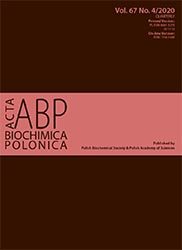Downregulated NORAD in neuroblastoma promotes cell proliferation via chromosomal instability and predicts poor prognosis
Running title: NORAD in NB progression and prognosis prediction
Abstract
Increasing evidence suggests that long non-coding RNAs (lncRNAs) are involved in neuroblastoma (NB) pathogenesis. The aim of this study was to elucidate the roles and underlying mechanism of non-coding RNA activated by DNA damage (NORAD) in childhood NB. Both public data and clinical specimens were used to determine NORAD expression. Colony formation, cell proliferation and wound healing assays were performed to evaluate NORAD effects on proliferation and migration of SH-SY5Y and SK-N-BE(2) cells. Flow cytometry was used to examine the cell cycle changes. The expression of genes and proteins involved in chromosomal instability was determined by qRT-PCR and western blotting, respectively. Our results showed that low NORAD expression correlated with advanced tumor stage, high risk and MYCN amplification in both public data and clinical samples. Kaplan–Meier analysis indicated that patients with low NORAD expression had poor survival outcomes. Functional research showed that NORAD knockdown promoted cell proliferation and migration, and arrested the cell cycle at the G2/M phase. Moreover, the expression of the DNA damage sensor, PARP1, increased after NORAD knockdown, indicating a potential contribution of NORAD to DNA damage repair. NORAD silencing also affected the expression of genes and proteins related to sister chromatid cohesion and segregation, which are involved in chromosomal instability and consequent aneuploidy. These results suggest that NORAD may serve as a tumor suppressor in NB pathogenesis and progression. Thus, NORAD is a potential therapeutic target and a promising prognostic marker for NB patients.
Acta Biochimica Polonica is an OpenAccess quarterly and publishes four issues a year. All contents are distributed under the Creative Commons Attribution-ShareAlike 4.0 International (CC BY 4.0) license. Everybody may use the content following terms: Attribution — You must give appropriate credit, provide a link to the license, and indicate if changes were made. You may do so in any reasonable manner, but not in any way that suggests the licensor endorses you or your use.
Copyright for all published papers © stays with the authors.
Copyright for the journal: © Polish Biochemical Society.


